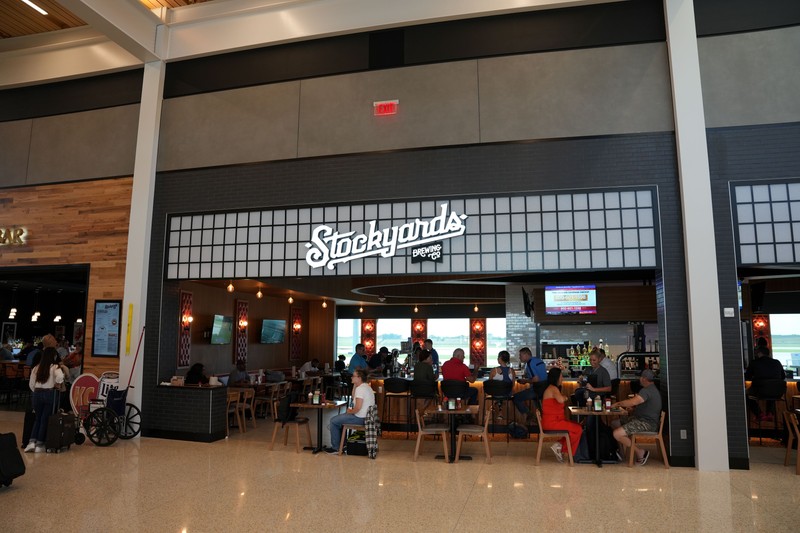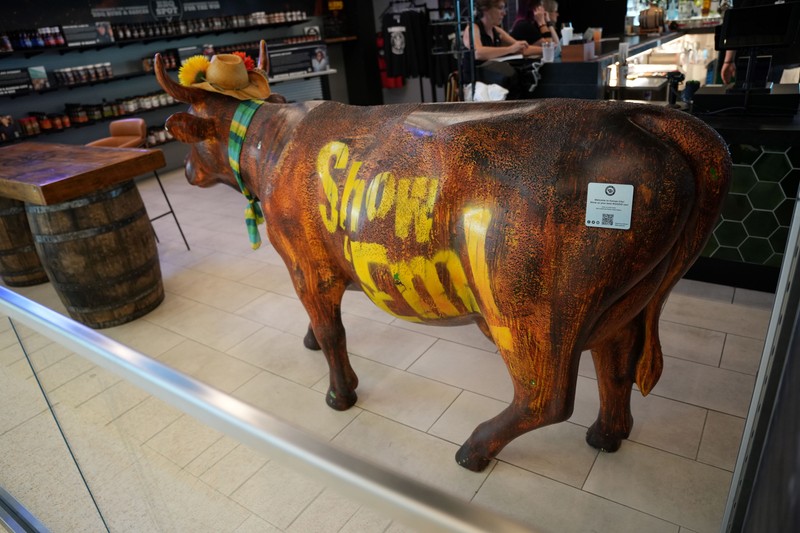Kansas City Stockyards; Stockyards Brewing
Introduction
Text-to-speech Audio
This airport restaurant operated by the iconic West Bottoms establishment Stockyards Brewing pays tribute to Kansas City's history as the central hub of beef production in the Great Plains and includes several works by area artists. Kansas City's West Bottoms was home to the second-largest stockyard in the United States, trailing only behind the Union Stock Yards in Chicago. Founded in 1870 and operating until it closed in 1991, the Kansas City stockyards included all aspects of the business, including finance, at the historic Live Stock Exchange Building, which is home to the Golden Ox Restaurant- a Kansas City landmark that continues to attract visitors to the West Bottoms. Beginning in 1899, the stockyards began what is known today as the American Royal Livestock and Horse Show. At the height of its operations, between 1911 and the devastating flood of 1951, the stockyards sold millions of cattle, including cows, hogs, sheep, horses, and many other animals.
Images


Backstory and Context
Text-to-speech Audio
The rapid growth of the Kansas City Stockyards occurred after the construction of the Hannibal Bridge over the Missouri River, but the history of this area and the cattle trade date back prior to the establishment of the city. In the 1840s, Native Americans, squatters, and farmers converged in the West Bottoms to trade livestock, flour, furs, and more. Anticipating a further increase in trading, local businessmen constructed 11 pens, 15 unloading chutes, and a pair of Fairbanks scales in 1870. That same year, over 100,000 cattle were moved with those limited facilities. By 1871, the “Kansas Stock Yards Company” came into being. From there, the stockyards grew immensely over the years, acquiring more land and trading hundreds of thousands of livestock.
Kansas City grew around the stockyards, and towards the end of the 19th century, about 90 percent of the value in Kansas City lay in the West Bottoms. The stockyards continued to flourish, surviving floods and fires and building the nine-story Livestock Exchange (at the time of its building in 1911, it was the tallest building in the world). In 1929, for example, around 2,179,000 head of cattle and 4,151,000 hogs were sold through the stockyard. Activity peaked in the 1940s with over $350 million in exchange every year. The great flood of 1951 had a devastating effect on the stockyard and many packing plants closed. The largest reason for the decline of the stockyards was the capacity for farmers and ranchers to negotiate directly with packers or through small regional auction barns. The stockyards continued for another 40 years after the flood, closing in 1991.
